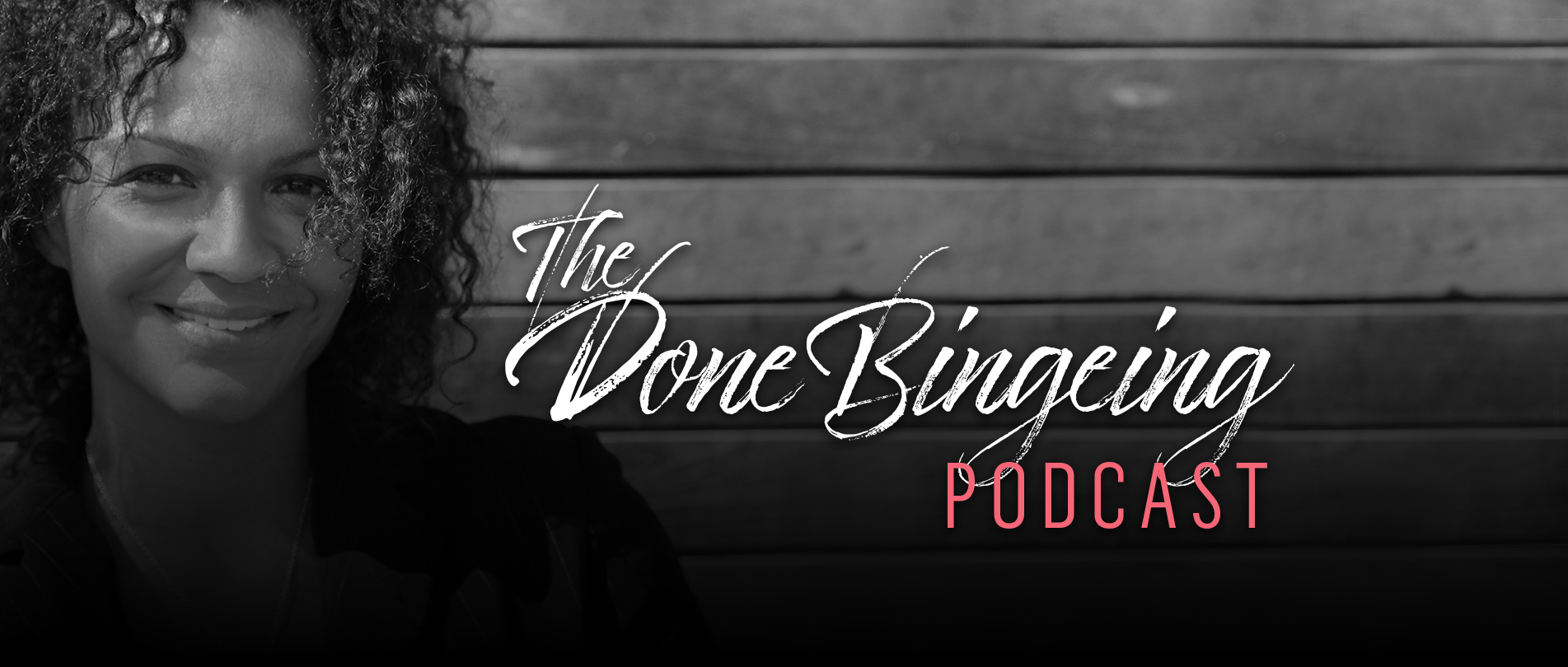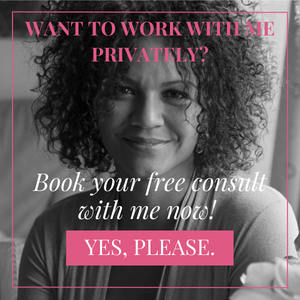
EP #75: Mid-summer goal check-in

Depending on where you live, you may be about a month into summer. The summer is fraught with exposure stress for many binge eaters. With more heat comes more beach trips, more pool parties, more shorts, shorter sleeves, higher skirts, undershirts, camisoles, Speedos, and bikinis.
With more flesh to be seen, the spring often brings on a deluge of summer pressure, preparations, and promises. At this point in June, those aspirations may be going swimmingly well or drowning in disappointment. If it’s the latter, or if you want to set a new goal right now, this episode is for you—it’s all about setting intensions, based on the work of Chris Burris, an Internal Family Systems lead trainer and author.
Get full show notes and more information here: https://www.holdingthespace.co/75.
If you’re ready to invest in one-on-one support to help heal binge eating, go to https://holdingthespace.as.me/free30 and get on my calendar for a complimentary consult today.
Episode: Play in new window
Subscribe: Apple Podcasts| Stitcher| Google Podcasts | Spotify | iHeartRadio | Amazon Music | Deezer | RSS
Featured on the show
- Burris, Chris. (2022). Creating Healing Circles: Using the Internal Family Systems Model in Facilitating Groups.
- If you’re interested in one-on-one support, book your free, 30-minute consultation with me here!
- Join Done Bingeing on social: Instagram | Facebook Pinterest | LinkedIn
What do toilet paper and the Town Crier have to do with you and binge eating? Keep listening!
Welcome to The Done Bingeing Podcast. This is the place to hear about how you can pair the emerging brain science about why you binge with powerful life coaching to help you stop. If you want to explore an evidence-based, non-clinical approach to end binge eating, you’re in the right place.
It’s time to free yourself. You have more power than you know. To find out more, go to www.holdingthespace.co and click Programs.
And now, your host, Internal-Family-Systems-Level-3-Trained and Master-Coach-Certified Martha Ayim.
Hey friends! I hope you’re doing amazing.
Depending on where you live, you may be about a month into summer. The summer is fraught with exposure stress for many binge eaters. With more heat comes more beach trips, more pool parties, more shorts, shorter sleeves, higher skirts, undershirts, camisoles, speedos, and bikinis.
With more flesh to be seen, the spring often brings on a deluge of summer pressure, preparations, and promises . . . like this one: It’s going to be a hot-bod summer and I swear I am going to wear a bathing suit and I am not going to lay on the beach and cover everything but my face with a blanket ever again.
At this point in June, those aspirations, goals, and dreams may be going swimmingly well or drowning in disappointment. If it’s the latter, or if you want to set a new goal right now, this episode is for you—it’s all about setting intensions, based on the work of Chris Burris, an Internal Family Systems lead trainer and author.
As Chris writes in his book, Creating Healing Circles: Using the Internal Family Systems Model in Facilitating Groups, we’re prone to instantly noticing our negative experiences, actions, emotions, and thoughts. And you know where that can go. Negative thoughts about negative experiences, which then lead to negative emotions that drive us to do things we don’t want to be doing, like binge eating.
And I’m just getting started.
Then we have negative thoughts about our bingeing that lead to more negative emotions and more negative actions (hint: more binge eating or shaming) and still more negative results that have the negative thoughts circling overhead again.
Because we’re so apt to take in the negativity in our lives, we can soon find ourselves spiralling down the old crapper, as the saying goes. But before you roll out some toilet paper, let’s talk about the power of setting intentions.
Here are 6 reasons why setting intentions is a game changer:
First, an intention invites us to turn our reactions about the negative into potential for the positive, into the possibility of fostering healing and harmony. And being able to shift our focus toward purposefully and creatively seeking clarity about what we really want is a key aspect of our ability to evolve.
Second, setting intentions is a process that validates our difficult experience, allowing the parts of us that are struggling with something to feel heard, understood, and supported. When that happens, they don’t need to stay entrenched in disillusionment, screaming like the Town Crier that everything sucks.
Third, intentions bring to light things in ourselves and in our world that support what we really want and things in ourselves and in our world that don’t support what we really want.
Fourth, returning to our intentions, reminding ourselves of them, repeating them brings us closer to our own powerful agency and choice as we stay connected with and keep moving toward our dreams. And it’s so important to recall our own wisdom and our own ability to lead ourselves—especially when so much of binge eating feels like the opposite is true: that we can’t trust ourselves, that only people outside of us could be experts on what we need.
Fifth, the practice of setting intentions helps us discern if there are any parts of us that are trying to prevent us from naming a clear intention in the first place or from having the power to go for our goals. Sometimes the ability to know what we most want seems lost.
If you’re not able to get a clear sense of an intention, don’t be alarmed. Sometimes a part of us tries to block us from dreaming or going for what we really want.
Why?
Because it has concerns and wants to protect us in some way.
You can gently inquire into how the ability to know what you most want may have gotten lost. If something is preventing you from knowing what you most want, why might that be? What is this part of you concerned with happen if you not only knew what you most wanted but also moved toward it?
Understanding parts that object to our intentions is so much more empowering then simply being frustrated and confused when we seem to get in our own way of our goals and dreams. Understanding a parts perspective allows us to stay connected with our parts and help to negotiate a way forward.
The sixth reason why setting intentions is so important is that taking the time to articulate what it is that we really want in our lives deepens our investment in ourselves, our healing, and our evolvement.
Here are seven steps to setting clear intentions:
Step 1.
Find yourself a cozy chair, a notebook, and a pen.
Write down a goal you want to reach or a dream you want to make real. Sometimes simply understanding what we’re aiming for begins to set the journey toward it in motion. How do you want to design your life? What do you want to create, do, stop doing, achieve, heal, etc.?
As you write your intention, use the first person and present tense—for example, “I am able to say ‘no’ to things I don’t want or need to do, which decreases my stress eating substantially.” This kind of statement captures you already experiencing what you want. Your statement should resonate deeply for you and you can update the intention as you go.
Step 2.
Imagine clearly living as if this intention is occurring.
So often we say that we really want something, but just as often we don’t really know what that means. Take the time to visualize what it really means to be living as you want to live.
Step 3.
Once you have the image, ask yourself what it feels like to already be in this place of having what you really want. In this place, viscerally experience what your fulfilled intention will actually be like in your mind, body, heart, and soul.
Step 4.
Tune in to any sensations you experience in your body as you imagine already living your intention. For example, do you notice sensations of inspiration or fear, or something else?
Step 5.
Sense what parts of you may be present in these sensations. For example, maybe some parts are cheering you on toward realizing your intention and maybe other parts are concerned about it or interfering with it. It’s okay if you notice both kinds of parts.
Notice that simply by starting with an inquiry—What parts are active in me as I set an intention?—you begin to get a sense of how your internal world responds.
Be gentle with this process. If there are parts that oppose your intention, try to hear them out from a place of genuine curiosity and compassion. What are they afraid would happen if they let you realize your dream?
Understanding parts and helping them with their fears will built trust with them. And trusting relationships are essential for navigating the journey ahead.
Step 6.
Identify if there is a core belief or fear present. For example, maybe you have a part that doesn’t want you to set an intention to lovingly notice what foods both taste amazing and help you thrive because that would require focusing more on you. Focusing more on you may mean focusing less on others. If you have a core belief that your worth and lovability derive from taking care of others and ensuring that all their needs are met, it makes sense that a part would prevent you from taking better care of yourself. The risk is too great. No one wants to live without a sense of worth and lovability and without connection with others.
But what if we could help the vulnerable part of you who learned that worth and love need to be earned? What if that support could help this part let go of a belief that was necessary to hold at one time, but that is untrue? If this part could get the help it needs, your whole being would angle toward more clarity and courage.
Step 7.
Imagine that happening—the letting go of a core belief like this that had held you back. What would you be inclined toward, moved toward, guided toward? This is the space of living from self-agency and self-regard.
After you’ve set an intention, it’s time to take action on it to make it happen. But this might not be what you think it is. It’s not just doing everything that’s required to make a dream a reality—in fact, that singularly focused perspective is how most lost dreams join the graveyard heap of good intentions.
And it’s not just adding a component of convincing parts that won’t go along with the goal why they should go along with the goal.
It’s about actually listening as we just did to any sensations that come up around the intention, parts that resist the intention, and core beliefs and fears that keep you stuck where you are. They have something important to share that needs to be understood and helped.
Noticing parts that prevent your intention from being realized will set the stage for your own agency to step in, heal, and lead. That’s why it’s so critical to keep your finger on the pulse of how both our internal and external world responds to our goals and dreams. Showing up for your intention in this way makes them so much more possible.
And this is how stones that block the way become stepping stones for the way. The blocks to your dreams become the compass toward them. When we get to know the parts within us and learn how to help them, what once seemed so confusing now leads the way to so much clarity.
That’s it for Episode 75. Thank you for listening! If you’re interested in private coaching to help you reach your goals and realize your dreams, book me for a free consultation at https://holdingthespace.as.me/free30. Let’s get you on my calendar today!
Thanks for listening to The Done Bingeing Podcast.
Martha has the highest-level training in both the evidence-based Internal Family Systems approach and in life coaching, and she’s available to help you stop bingeing. You can learn more about her programs by going to www.holdingthespace.co and clicking Programs.
Stay tuned for the next episode on freeing yourself from binge eating and creating the life you want.
- Never miss an episode by subscribing via Apple Podcasts, Stitcher, Google Podcasts, Spotify, iHeartRadio, Amazon Music, Deezer or RSS.
- Leave a rating and review in Apple Podcast.
- Have a question or topic you’d like to see covered on the podcast? Send it on over to me here.
- If you found this episode valuable, it would mean so much to me if you would please share it with your friends
If you have any comments about this episode, drop me a line!
Click this link to send me an email.
Thank you so much for sharing your dreams with me.
Sending much love back to you!






















0 Comments